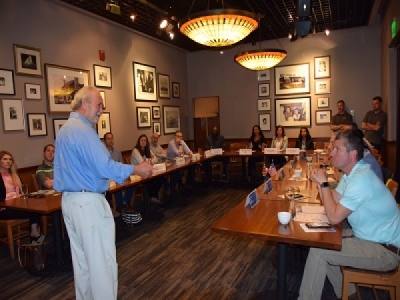
Posted on May 15, 2019
DredgeWire reports on presentation by the Port to the World Trade Center Institute Bowe Fellows in its EDGE Program
Natasha Pavlovich of the Port of Baltimore made a special presentation to the 2018/2019 cohort of Bowe Fellows as part of the World Trade Center Institute’s EDGE Program-“Emerging and Developing Global Executives.”
(
https://www.wtci.org/edge/about-the-program/)
Out of all 173 US ports, Baltimore leads the country in RO/RO tonnage, with almost 50% market share of overall national volume, and almost double the share of the next closest port (Georgia.)
Baltimore also ranks number one in car and light truck volume, and number two in coal exports.
In 2018 Baltimore exceeded 1 million containers (TEU) for the first time ever, about double the level of 2009. That container trade is relatively balanced between imports and exports.

Direct and indirect jobs created and sustained by the Port exceeded 139,000 with almost $400mm in tax revenue generated for the State of Maryland and local entities.
The Port faces many challenges to sustain its growth. These include dredging, dredged material placement, a 100+ year-old rail tunnel through Baltimore currently limited to single stack containers, and access to additional land.
The Port’s dredging plans include 5MM yd.³ a year for the next 20 years, not just for maintenance, but to expand and develop a docking loop facilitating inbound and outbound vessel traffic.
The Port is now building a 28mm yd.³ disposal area at Poplar Island in the Chesapeake Bay with plans for two more mid bay island projects, combining dredged material disposal with wetlands restoration.
The Port is one of just a few East Coast ports with 50ft (16m) channel depth access thanks to a long term commitment to dredging.
With over 300 years of history behind it, the Helen Delich Bentley Port of Baltimore, founded in 1706, remains optimistic for continued years of growth ahead.
Source: DredgeWire exclusive





